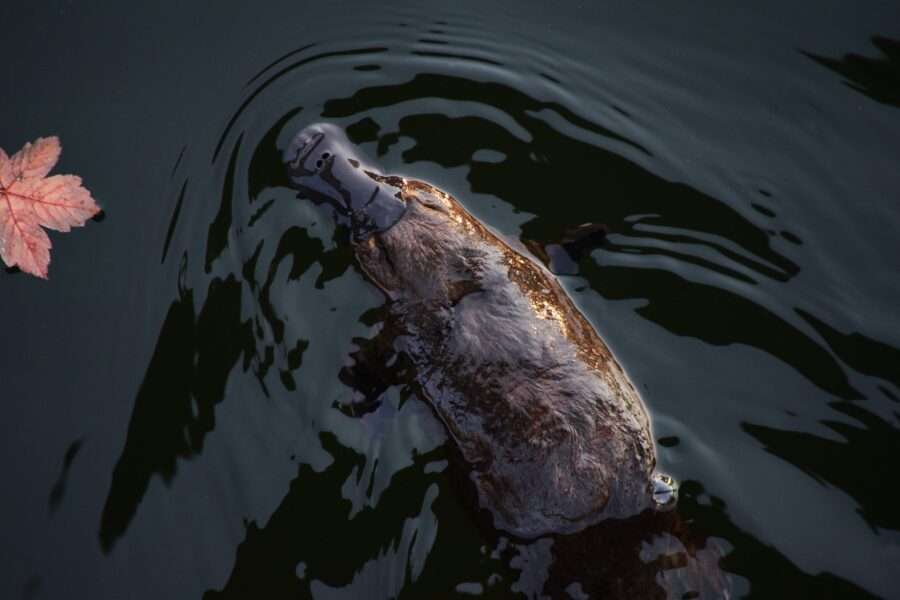platypus (Ornithorhynchus anatinus) is the true delusion of zoology. It is a mammal with a flattened duck beak, a beaver tail, and a furry body resembling an otter, and it lays eggs like a bird or reptile.
Also, like other aquatic mammals, when diving their eyes are covered with a transparent membrane and folds of skin prevent water from entering through their ears. In addition to all these strange traits, the males have spikes on their hind flippers that inject venom into their rivals.
Photo: Trevor McKinnon/Unsplash
Despite being a species of currently of little concern in terms of conservation, with the International Union for Conservation of Nature (IUCN) giving it “Not Threatened” status, the platypus population has suffered losses, particularly due to pollution of freshwater streams, on which the animal depends. It’s food and of course to survive.
Its limited distribution, which is restricted to the eastern region of Australia, is also a risk factor for the survival of the species. But the good news is emerging.
Last Friday, the reintroduction of the platypus began in the Royal National Park in the Australian state of New South Wales, after more than 50 years of local extinction, a project that began more than eight years ago with the participation of the Australian government, researchers at the University of New South Wales and civil society organizations such as Taronga Conservation Society Australia and WWF-Australia.
In this first phase, four females were reintroduced to the banks of the Haking River, with the aim of releasing two more females and four males to the same site.
Australian Environment Minister Penny Sharp, who was present during this first release, considers the platypus reintroduction program in the Royal National Park “essential to ensuring the future safety of this species,” according to a statement from the University of New South Wales.

Photo: Richard Freeman/University of New South Wales Sydney
NSW Premier Chris Minns posted a video to his Twitter account showing the release of a platypus in the park.
Not only is this cute, it’s also the first platypus in the Royal National Park in 50 years!
All thanks to the wonderful team at @employee and National Parks and Wildlife Service.
And there are more platypuses to come (yes I checked, it’s not a platypus). pic.twitter.com/aCBFofN0oM
– Chris Minns (@ChrisMinnsMP) May 15, 2023
“This is a critical project that will not only return the platypus to its rightful place in the park,” says Gilad Benno, a researcher who leads the reintroduction project with more than 20 years of experience in conservation programs and who, along with other colleagues, established the Platypus Conservation Initiative. Royal Patriotism, but is also intended as a model for future conservation efforts for species that have been largely ignored.”
Tahneal Hawke, one of the scientists involved in the work, explains that the animals placed in this park were collected from different populations spread across eastern Australia, “to ensure there are no impacts on indigenous populations and to ensure the genetic diversity of animals to be re-populated in the Royal National Park.”
However, to ensure the reintroduction was successful, the scientists spent months assessing the quality of the habitats in which the animals would be placed, testing the quality of aquifers and the availability of food, macroinvertebrates such as bloody nymphs, fly larvae and small crustaceans. .
And the task is not over. The researchers will continue to monitor the reintroduced individuals over the next few years in order to understand whether they are adjusting to the new environment in the best way possible.

“Hardcore alcohol maven. Hipster-friendly analyst. Introvert. Devoted social media advocate.”

